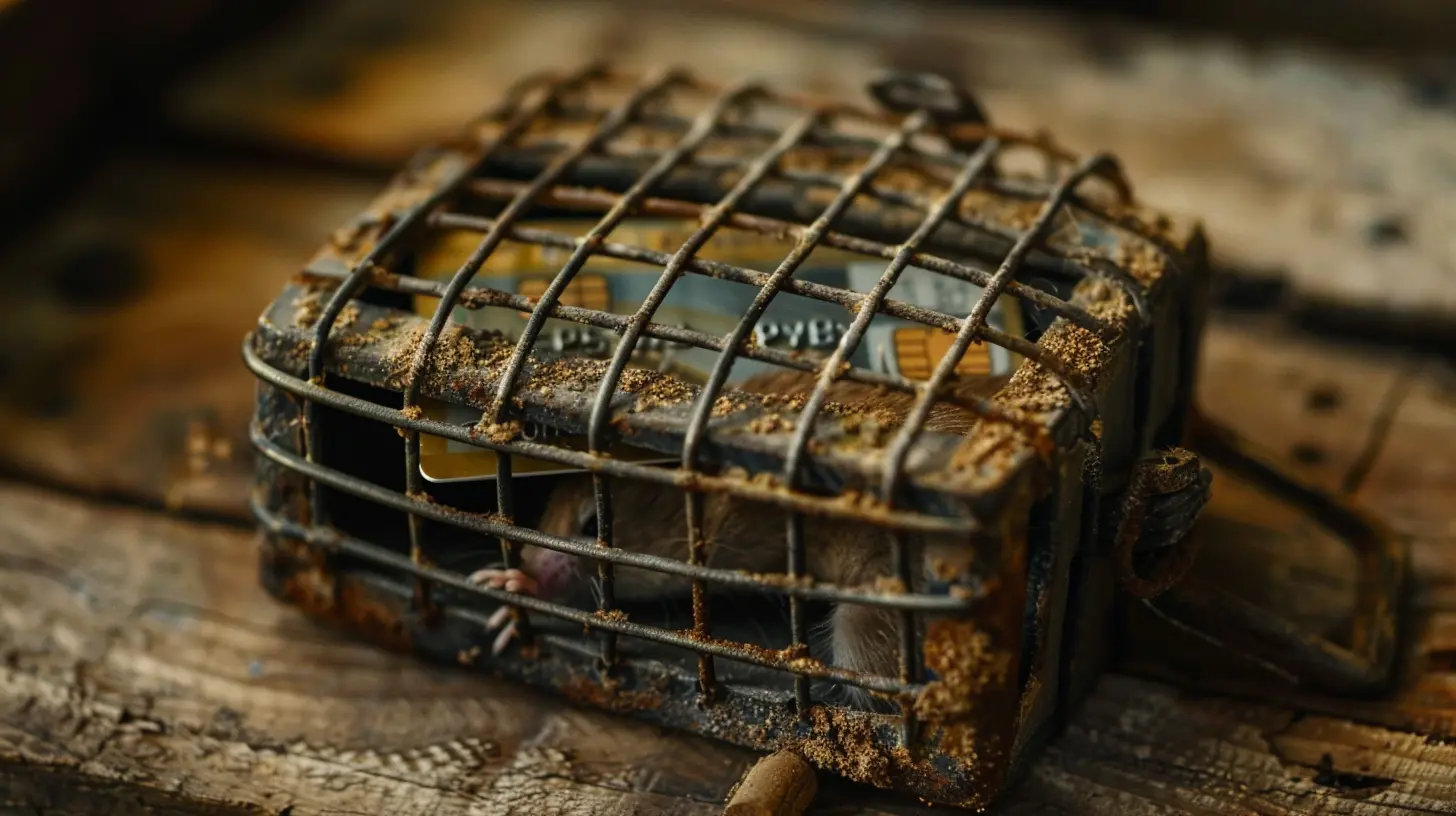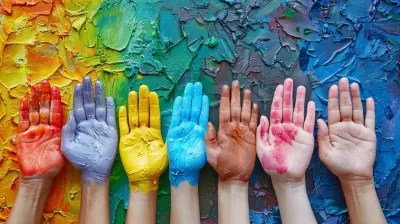Rethinking Credit Cards: Tools or Traps?
14 November 2025
Let’s talk about the sneaky little plastic rectangles that live in our wallets – credit cards. They’re small, shiny, and they promise the world. Swipe here, tap there, and bam – you’re flying first-class, sipping champagne, and living your best life. Or… you’re knee-deep in debt, wondering if you can pay for groceries with reward points.
So, what’s the truth? Are credit cards helpful tools or merciless traps dressed in plastic disguises? Spoiler alert: they can be both. Let’s break it down, unravel the mystery, and get real about how these cards work, without all the banker jargon.
What Even Is a Credit Card, Really?
Okay, quick refresher: A credit card is basically a short-term loan from a bank or financial institution. You borrow money, make payments with it, and promise to pay it back later (ideally before your due date so you’re not throwing money into the interest abyss).Sound simple? It kind of is—and it kind of isn’t.
Imagine giving your friend $20 to buy lunch. Now imagine that friend saying, “Sure, I’ll pay you back in a month... maybe... with an extra 15% added on if I don’t.” That’s a credit card in a nutshell. You're the friend, and the bank is the person texting you every hour about their $20.
The Tool Side of Credit Cards: The Good News First
Let’s give credit (ha!) where credit is due. Credit cards aren’t inherently evil—used wisely, they’re like Swiss Army knives for your finances.1. Build That Credit Score Like a Pro
Ever tried renting an apartment, getting a car loan, or even setting up a cell phone plan without a credit history? It’s like trying to play a video game without a controller.Credit cards help you build credit by showing lenders you’re trustworthy. You borrow, you pay it back (on time), and your score climbs. It's the adult version of collecting gold stars.
2. Rewards, Points, and Basically Free Stuff
We all love free stuff, right? Many credit cards give you cashback, airline miles, reward points—even access to airport lounges with free snacks (that’s the dream). If you’re spending money anyway (responsibly, of course), it’s nice to get a little somethin’-somethin’ in return.It’s like getting a free cookie every time you buy milk. Sure, you needed the milk—but that cookie hits different.
3. Fraud Protection and Peace of Mind
Ever had your debit card skimmed at a gas station? It's like giving someone a front-row seat to your bank account. Credit cards, on the other hand, usually come with fraud protection.If someone buys 14 hoverboards in your name, you can dispute the charges—often without losing a dime. It's like financial insurance with a side of "not my problem."
4. Emergency Lifeline (But Don’t Get Too Cozy)
Life is unpredictable. Roofs leak, cars break down, and let’s be honest—sometimes, you just need that one extra tank of gas before payday.Credit cards can be a temporary safety net. Just remember: it’s a net, not a hammock. Don’t get comfy.
The Trap Side of Credit Cards: Let’s Get Real
Now, for the juicy part—why so many people fall into the credit card trap. Spoiler: It’s not just because they’re careless. Credit cards come with built-in "gotchas" that are easy to miss if you’re not paying attention.1. Interest Rates That Could Make You Cry
You know what’s fun? Watching your balance grow because of your spending. You know what’s not? Watching it grow because of 25% interest.If you don’t pay off your balance in full every month, interest kicks in—and it’s not messing around. Even a small balance can balloon into something that looks like a college tuition bill.
2. Minimum Payments: A Sneaky Trap
Paying the minimum each month might feel like you’re doing the responsible thing. “Hey, I paid something!” But in reality, it’s like putting a band-aid on a leaky fire hydrant.Minimum payments mostly go towards interest, not the actual debt. So you’ll be stuck in a financial time loop, paying the same debt for years.
3. Spending Now, Regretting Later
There’s something about credit cards that makes spending feel less real. Tap your card, walk away with an air fryer you didn’t need. Easy, right?But that “free money” isn’t free—and by the time the bill arrives, that air fryer suddenly seems less like a good idea and more like a $230 mistake.
It’s financial fast food. Tastes great in the moment, but eventually, your wallet gets indigestion.
4. Fees... Fees Everywhere
Annual fees. Late fees. Foreign transaction fees. Balance transfer fees. If someone made a drinking game out of all the credit card fees, well… let’s just not.Even if you’re trying to be responsible, one slip-up – like paying one day late – can trigger a fee and even a bump in your interest rate. It's like the card is just waiting for you to sneeze wrong.
So, Are Credit Cards Worth It?
Like most things in life: it depends. (Ugh, we know. The worst non-answer answer.)Credit cards can be powerful tools if you’re disciplined, informed, and self-aware. But if impulse spending is your toxic trait or budgeting gives you hives, a credit card can quickly spiral into a wallet-sized nightmare.
Tips to Make Credit Cards Work FOR You (Not Against You)
Let’s say you’re ready to embrace credit cards, but you don’t want to become another cautionary tale. Here’s how to do it like a pro:1. Know Your Limits—Literally
Just because the bank gives you a $10,000 limit doesn’t mean you should treat it like bonus cash. Spend only what you can realistically pay off by the due date.2. Pay in Full, Every Month
This is the golden rule. Avoid interest altogether by paying off your entire statement balance (not just the minimum). Treat your credit card like a charge card—borrow short-term, then pay up.3. Use It Like Debit (But Smarter)
Try this trick: pretend your credit card is a debit card. Only spend money that you already have in your checking account. That way, you're not borrowing, just delaying the deduction.Bonus: You get the rewards and fraud protection without the debt.
4. Set Up Auto-Pay (Unless You Like Late Fees)
One day can be the difference between a clean credit report and a late payment fee. Set up auto-pay for at least the minimum to protect your payment history.5. Keep Your Utilization Low
Here’s a fancy credit score tip: try to use less than 30% of your credit limit at any given time. The lower, the better. It shows lenders you're not overly reliant on credit.It’s like showing up to an all-you-can-eat buffet and just grabbing a salad. You could go wild—but you’re disciplined.
6. Choose the Right Card for Your Lifestyle
Some cards are built for travelers. Others are for shopaholics. Some even help you build credit if you’ve got none (hello, secured cards!).Compare fees, reward programs, and interest rates before committing. It’s like dating—don’t marry the first one you meet.
The Verdict: Tool or Trap?
Here’s the thing: a credit card is just a tool. It’s not inherently good or bad. It’s how you use it that makes all the difference.Think of it like fire. 🔥
Used properly, fire keeps you warm, cooks your food, and lights your way. Used recklessly, it burns down your metaphorical financial house.
So, are credit cards tools or traps? The answer is BOTH. But now that you’re armed with the facts (and a healthy dose of sarcasm), you’re in a much better position to choose wisely.
Swipe smart, folks. Your future self is watching.
Final Thoughts
Credit cards don’t have to be the villain in your financial story. With the right mindset, healthy habits, and a little bit of self-control (we know, it’s hard), they can actually help you level up your money game.Just remember: don’t fear the plastic—but definitely read the fine print.
And next time you’re tempted by a 50% off flash sale “only for today” – ask yourself: Is this the tool part, or the trap part talking?
all images in this post were generated using AI tools
Category:
Financial LiteracyAuthor:

Anita Harmon
Discussion
rate this article
1 comments
Celine McCarthy
This article offers valuable insights into the dual nature of credit cards. They can be powerful financial tools when used wisely, yet they also pose significant risks of debt and financial strain. It's essential to approach credit cards with caution and a solid understanding of one's financial habits.
November 14, 2025 at 5:01 AM


